When you establish a reef tank, you actually create a mini-ecosystem for the fishes, corals, and other marine organisms. If you are a new aquarist, you might not know that clean up crews are also essential components you need to nurture in your tank along with the fish and corals. However, do you know when to add clean up crew to the reef tank?
The best time to add cleaning crews to the reef tank depends on the type of algae outbreak. A specific clean up crew works best against certain algae. You should add them when the tank has cycled and the algae outbreak has started.
However, in this article, I am going to explore different kinds of cleaning crews and when you should place them in your reef tank.
Waiting no more, let’s dive in.
What Are Cleaning Crews?
Cleaning crews include different kinds of crabs, shrimps, snails, sea stars, urchins, etc. These little scavengers and algae munchers perform multiple functions on the tank water. They always keep them busy with aerating and sifting through the sand, removing non-living organic substances, and keeping the algae in check.
Though there are many cleaning crews out there that suit perfectly for your reef tank, you do not require to get them all inside the aquarium. The types of cleaning crews you should add in your tank depends on the types of nuisance algae you are affected by, tank size, and other factors.
Best Clean Up Crews and When to Add Them to Reef Tanks
Now that you have got some idea about cleaning crews, let’s have a look at some of the common cleaning crew species and when to add them to your reef tank:
Snails: Best Snails For Reef Tank To Eat Algae
Snails are the most common type of cleaning crews many aquarists love to use in their new tank. They are effective against cyano, diatoms, and other many types of nuisance algae. Below are some of the common snail species that you can add to your aquarium.
- Tiger Nassarius Snails
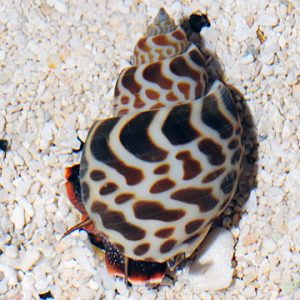
Tiger Nassarius snails are large and suitable for a reef tank that features a sand bed. They love to spend most of their daytime under the sand. They usually come out either when the food is served in the aquarium or when it is night.
Staying under the sand, the Tiger Nassarius snails scavenge for the uneaten foods and other decaying matters. When they explore under the sand, they aerate the substrate.
When it comes to adding them, I do not recommend adding them to a new aquarium. It is best to place them in the aquarium after some days of the establishment when you’ve added some fish.
- Banded Trochus Snails
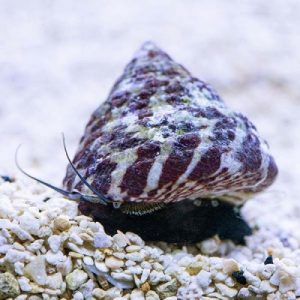
If you’ve got a new aquarium, you can use this banded trochus or any variety of trochus snails. They patrol the glass area and work to control diatoms.
Being peaceful in nature, they are not aggressive on nuisance algae. You can consider adding one banded trochus snail for every two to three gallons of tank water.
- Astrea Snails
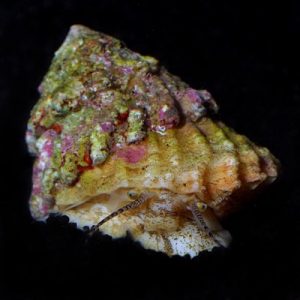
Astrea snails work as an all-rounder cleaning crew in a reef tank. Though they love hair algae the most, they also do not spare diatoms, cyano, and green film if the hair algae in the tank are inadequate to satisfy their large appetites.
However, Astrea snails take some more for acclimation in a new tank. But, when acclimated, they are better than other snails in coping with high water temperature.
You should decide to add Astrea snails when there is a hair algae outbreak in your tank.
When you add Astrea snails to your reef, choose the bigger ones. It is because smaller ones might easily fall prey to hermit crabs and fish.
- Abalones
Abalones have similarities with giant limpets. With an average growth of 3 inches, they feature a single top shell.
When your reef tank has got a film algae outbreak, you should try Abalones as they consume film algae voraciously.
However, they are quite unnecessary for your reef tank if your reef tank does not have film algae. The reason is that Abalones eat only film algae and nothing else.
- Cerith Snails
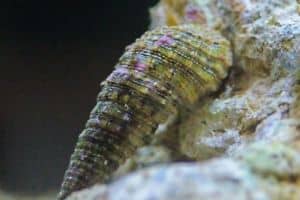
Though many people are unaware of the power of Cerith snails, you should keep them in your reef tank for a variety of reasons.
Being omnivorous, they consume diatoms, cyano, film algae, uneaten foods, detritus, and whatever else they feel comfortable to eat.
Keeping them buried under the sand, Ceriths are also great sand sifters. However, though they can grow up to 3 inches, they have slow growth and limited reproduction.
Though many aquarists do not like them for slow activity, they can truly help the established tanks to perform routine cleaning and the new tanks to control different kinds of nuisance algae.
- Margarita Snails
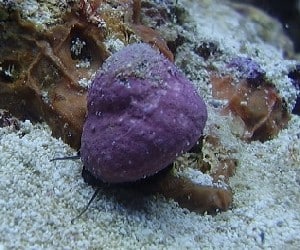
Margarita snails are way faster than Cerith snails when it comes to cleaning the tank. Though they may live eating film algae, hair algae are their best choice. Staying on the glass, they keep their body half in the water and half out.
One problem with Margarita algae is that they cannot tolerate high temperatures. If the tank temperature goes higher than 76F, their lives can be at stake.
We recommend you to add them to your reef tank to control hair algae. As it is their staple food, they may stave out if the presence of hair algae in the tank is inadequate to quench their big appetites. That’s one reason why you should avoid adding them to large quantities.
- Nassarius Snails
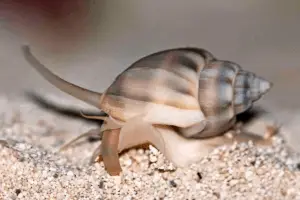
Being small in size, Nassarius snails are not algae eaters. On the contrary, they work as perfect sand bed cleaners in the aquarium that most of the snails do not cover. They live on uneaten fish food. They also consume many types of detritus other snails might frown upon.
If you want to keep Nassarius snails on your reef, make sure that you’ve got a sand bed of at least 4 inches deep.
So, when should you add them to your reef tank? I recommend adding Nassarius snails to the reef aquarium only when the tank has matured for a couple of months following the cycle.
- Nerite Snails
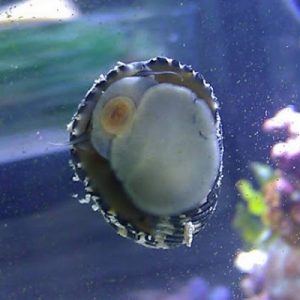
Though nerite snails rarely grow bigger than 1-inch, they are effective at eating algae of various kinds including the film, hair, and cyanobacteria to a small proportion. Their expertise lies in consuming diatoms and the algae that grow on the tank walls. However, most of the nerite species are for freshwater tanks.
They cannot reach all the places in the tank due to their size. Though they pass most of their time under the water, you might sometimes see them wandering above the water.
Under favorable conditions, Nerite snails survive up to 5 years. But, as they are small in size, they eat algae at a slower pace. To get the best algae control system in your established tank, you should add Cerith snails along with Nerites.
- Cowries
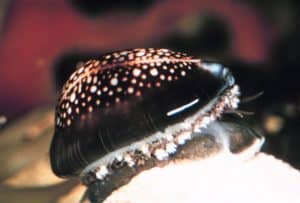
Cowries are amazingly beautiful with patterned glass-like shells. They love to stay on the live rock during their juvenile period and eat detritus and some types of algae. But, when they grow up, they start eating anemones and soft corals.
So if your reef tank contains soft corals, anemones, and mushrooms, you should not add cowries to your reef tank.
- Turbo Snails
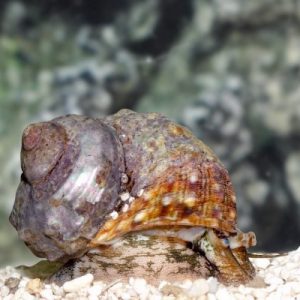
Turbo snails are vast in size and feed on algae quite fast. I recommend you add turbo snails if you have a big reef tank and there is enough food supply for them. You should also strive to secure the live rock to accommodate turbo snails.
Crabs: Best Crabs For Reef Tank Algae Control
Crabs are also excellent cleaning crews for a reef tank. There are many types of crabs that you can add to your aquarium, but all the species are not reef-safe. Hermit crabs are highly beneficial for eating leftover fish food and scavenging the tank. Let’s now see some reef-friendly crab species and when to add those to your reef tank.
- Red-legged Hermit Crabs
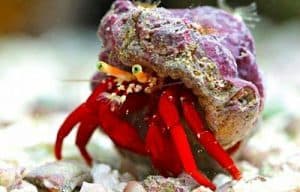
Red-legged hermit crabs are also known as Red reef hermit crabs, Bali bright hermit crabs, and Scarlet reef hermit crabs. Being free-safe, these carbs are experts at scavenging and controlling different kinds of algae including the hair ones. You can also take care of them quite easily even if you are a new aquarist.
Though they maintain a peaceful temperament, they are omnivorous in nature. They love to eat any meaty foods and algae. In some rare cases, they may attack snails as well, but this is not so common.
You should add these Red-legged hermit crabs along with some snails for algae control. However, to keep your snails safe from them, you should toss some spare shells on your reef tank. It will distract and discourage them from attacking the snails.
- Blue-legged Hermit Crabs
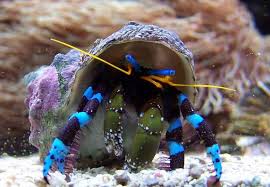
The Blue-legged hermit crabs are also a popular species that you can add to your reef tank. They are an all-rounder in consuming whatever they get to quench their giant appetite. They do not spare leftover food, algae, and sometimes even injured and dying specimens.
However, the disadvantage of adding Blue-legged hermit crabs is that they can be attacking towards the snails. You can prevent their attack to a great extent by spreading some shells of different sizes in your aquarium.
Though they are stunningly beautiful, I do not recommend you adding them to a new reef tank if you have better alternatives like red-legged hermit crabs or emerald crab species.
- Emerald Green Crabs
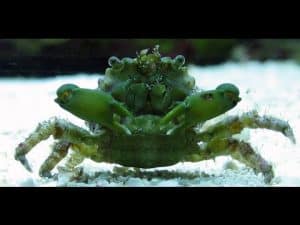
Emerald Green Crabs are also called Emerald Mithrax Crabs. They are very tiny, peaceful, and reef-safe. If you can supply enough dried seaweed, meaty foods, fish food for them in the tank, they do not interfere much with fish with corals. They can cope with other inhabitants of the tank once they get a perfect diet for themselves.
You should add Emerald green crabs to your reef tank to control the bubble algae outbreak. Apart from munching on other nuisance algae, they love to eat bubble algae (Valonia ventricosa) like nothing else.
The downsides of having Emerald green crabs are that they outgrow the tank pretty soon and might claim a share from the fish food pellets.
Shrimps: Best Shrimps To Keep Algae At Bay
With their long arms and little claws, shrimps are capable of reaching into the rocks and crevices and picking the parasites that no other cleaning crews can cover. They can be a valuable addition to your reef tank for both cleaning and scavenging purposes. Let’s get to know some of the common reef-friendly shrimps below:
- Camel Shrimps
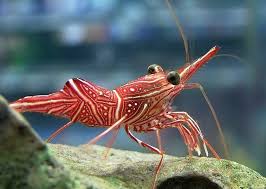
If you are interested in employing a good scavenger for your reef tank, you should include Camel shrimps in your reef tank without a second thought. With a moveable beak angled upwards, camel shrimps have white and red stripes on their body.
Camel shrimps do their best when kept with other shrimps of its kind. They consume the foods that get into the crevices and between the rocks.
As said above, Camel shrimps are good scavengers, but not effective for cleaning purposes. So, if you add camel shrimps for scavenging, you should also consider other species like Blood-red fire shrimps to perform the cleaning.
- The Blood Red Fire Shrimps
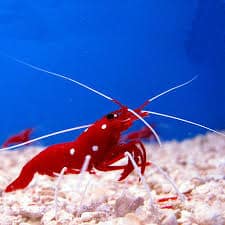
This species of shrimps is widely popular among aquarium hobbyists. With long white antennae at the top, Blood shrimps have a blood-like red body with drops of white spots. They live harmoniously with their mates but don’t like other shrimps of the same species.
You should add Blood shrimps if you need a cleaner to remove the parasites and dead tissue of fish in your reef tank.
- Peppermint Shrimps
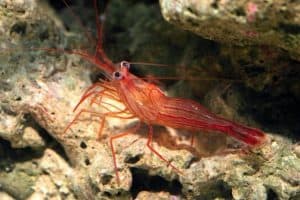
Being reef-safe, these shrimps are good scavengers. You can add Peppermint shrimps to your reef tank to control Aiptasia.
- Banded Coral Shrimps
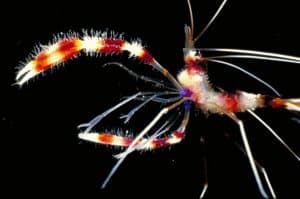
Banded coral shrimps feature white and red bands across its body parts. They have long white antennae and two pairs of white pincers that have given them a tremendous look.
Banded coral shrimps are basically scavengers and live on uneaten food. However, they also play the role of cleaning parasites from the fish if they feel like doing it.
Urchins: Best Urchins For Algae In Reef Tank
If the glass and rock of your reef tank are affected by unwanted pest algae, you should think of adding Urchins to clear them out. Here are two kinds of urchins you can add to your reef tank:
- Blue Tuxedo Urchins
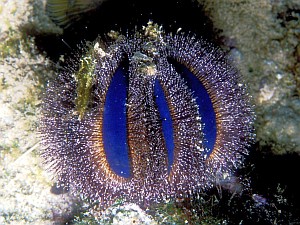
Blue Tuxedo urchins are nocturnal in nature. They keep themselves hidden under plants, crevices, or rocks in the daytime and come out at night for grazing on their nearest algae affected areas.
- Black Long-Spined Sea Urchins
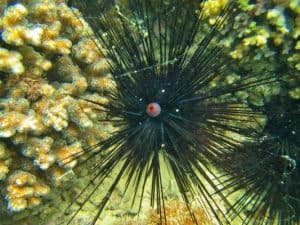
If your tank has a lot of rocks, Long-Spined sea urchins can be a good addition to the tank as cleaning crews. Like Blue Tuxedo, these urchins also love to spend their day under rocks and crawl at night for seaweed and algae.
Starfish
Starfish moves around the glass and keeps the diatoms and algae under control. They also contribute to clean algae from the rock. However, if you add Starfish in your reef tank, you have to keep the salinity, pH level, oxygen levels, and other parameters in a balanced condition as they are very sensitive to drastic changes of these parameters.
- Sand Sifting Starfish
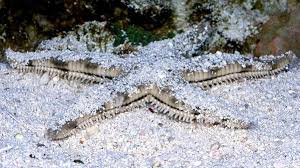
This is the only species of Starfish I suggest adding to your reef aquarium as a cleaning crew. However, consider adding it only if you’ve got a big tank with a deep sand bed due to the vast size of this Starfish. Sometimes, it can be as big as 12 inches.
Note that, if you add these Starfish, make sure that you can provide them with adequate food.
I encourage you to add them to an established tank where they can get detritus and leftover foods to a large quantity. They might munch on shrimp, mollusks, urchins, and other invertebrates if you fail to supply enough food for them.
How Many Cleaning Crews Should You Add?
You might get confused about the quantities of cleaning crew you should keep in your aquarium. Well, there is no shortcut rule or exact formula that helps to determine how many crabs, shrimps, or snails you should accommodate in your reef tank.
The number of cleaning crews required for a reef tank differs for a variety of reasons including tank size, kinds of fish and corals, types of nuisance algae in the tank, etc.
The rule of thumb is to test the water by adding dome specimens from the species I have mentioned above. You should add more if you see the positive result and feel that adding more will help to remove the algae and detritus.
Though you can usually use 1 snail per gallon and 1 crab for every 4 gallons of tank water, the best is to combine all the shrimps, crabs, snails, urchins, etc. to create a balance.
how many clean up crews per gallon?
So, if you have a 20-gallon aquarium, do not think that adding either 20 snails or 5 crabs will help. Instead, make a plan as per the type of the crews and the need of your reef tank to determine how many from each species of cleaning crews you should add to the tank.
Here are some common rules you should follow to keep some specific snails:
- When it comes to Nerite and Trochus snails, you should not add more than 1 snail per gallon.
- 1 Nassarius snail can be added for every 3 gallons of water. However, in the case of tall tanks, keeping just 1 for every 5 gallons is perfect.
- Due to the vastness in size and high-capacity to eat algae, 1 Turbo snail is enough to cover every 7 to 8 gallons of water.
- Astrea snails die easily once they are flipped over. It is wise to keep them limited to 1 for every 6 to 7 gallons of water.
Nano Reef Clean Up Crew
All types of clean up crews are not suitable for a nano reef tank. Due to smaller size and less water volume you need to select your cleaning crews carefully. Learn about the minimum requirement of a species and check if it can be fulfilled in your aquarium. Only then consider to add it.
I personally like cleaner shrimps, nassarius and nerite snails and red legged hermit crabs. For 12 gallon nano reef tank here goes my recommendations –
- 1 Turbo snail
- 2 Cerith snails
- 3 Nerite snails
- 2 Red legged hermits
- 1 green emerald crab
Scale up or down according to your tank volume.
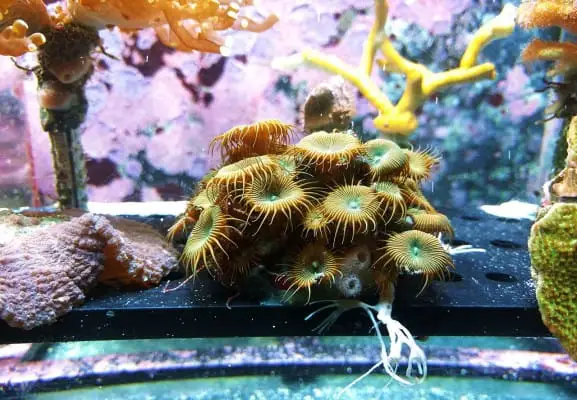
Things to Remember When Adding Clean Up Crews for Reef Tank
- Diatoms are the first algae that invade your reef tank. Add hardy snails like Nerites and Ceriths to get rid of diatoms.
- The best time to add cleaning crews is when you’ve completed cycling the tank with live rock.
- Keep the tank up-to-date by replacing the dead cleaning crews as soon as possible.
- We recommend you adding clean up crews in stages instead of adding all at the same time. Just add a few at a time depending on the issues you are facing in your tank.
- Adding too many clean up crews together can lead them to death due to inadequate food supply. They might also attack fish and other invertebrates if they do not get algae, detritus, and leftover food to consume.
- Do not add urchins, turbo snails, hermit crabs, and other species cleanup crews at the beginning if you do not experience hair algae, turf algae, or bubble algae in your reef tank. However, if the live rock in the new tank brings the algae, you have to ignore the rule.
- You can consider adding scavengers as the beginning crew if you wish to bring coral and fish to your tank soon and supply them with food. However, if the food supply to your fish is inadequate, you’ll require to add sinking pellet food to keep the scavengers alive. However, feed them infrequently as they have low metabolism.
- Avoid adding chitons, urchins, and limpets as the starting crews. They are very sensitive to unstable water parameters and prone to die easily. Choose other cleaners instead that can thrive even when the water conditions are unstable.
- As the starfish hardly survive without any established food source, do not add them at the beginning. You should plan to add sand sifting starfish (if you’ve got a big tank featuring a deep sand bed) after a few months of establishing the tank when you experience detritus and algae.
What are the Best Clean Up Crews for Removing Algae in a Reef Tank?
Different types of cleaning crews remove different types of algae. Here is a table to let you find out some active cleaning crew agents against certain algae types.
| Types of Nuisance Algae | Best Cleaning Crews |
| Diatoms | Nerite snails, Trochus snails, Cerith snails, Astrea snails, Starfish |
| Cyano | Astrea snails, Turbo snails, Nerite snails (to a small extent) |
| Film Algae | Nerite snails, Trochus snails, Abalones, Cerith snails, Margarita snails |
| Hair Algae | Astrea snails, Margarita snails, Red-legged hermit crabs |
| Algae on Sand | Cerith snails, Bumblebee snails |
| Macro Algae | Trochus snails, Turbo snails |
| Bubble Algae | Emerald green crabs |
Final Thoughts
I hope that now you have got a clear picture of when to add the cleaning crew to the reef tank. I can conclude by saying that starting slow is the best strategy to follow. If you put so many cleaning crews in a newly cycled tank altogether, they might starve to death. When you introduce new cleaning crews, make sure that you’ve also managed to feed them properly.
One thing you should know is that adding cleaning crews cannot solve the algae problems or clean the tank entirely overnight. They are just okay with routine cleaning. When your tank goes under algae blooms, you will need to adopt other strategies such as water change, quarantining the rocks, etc.
